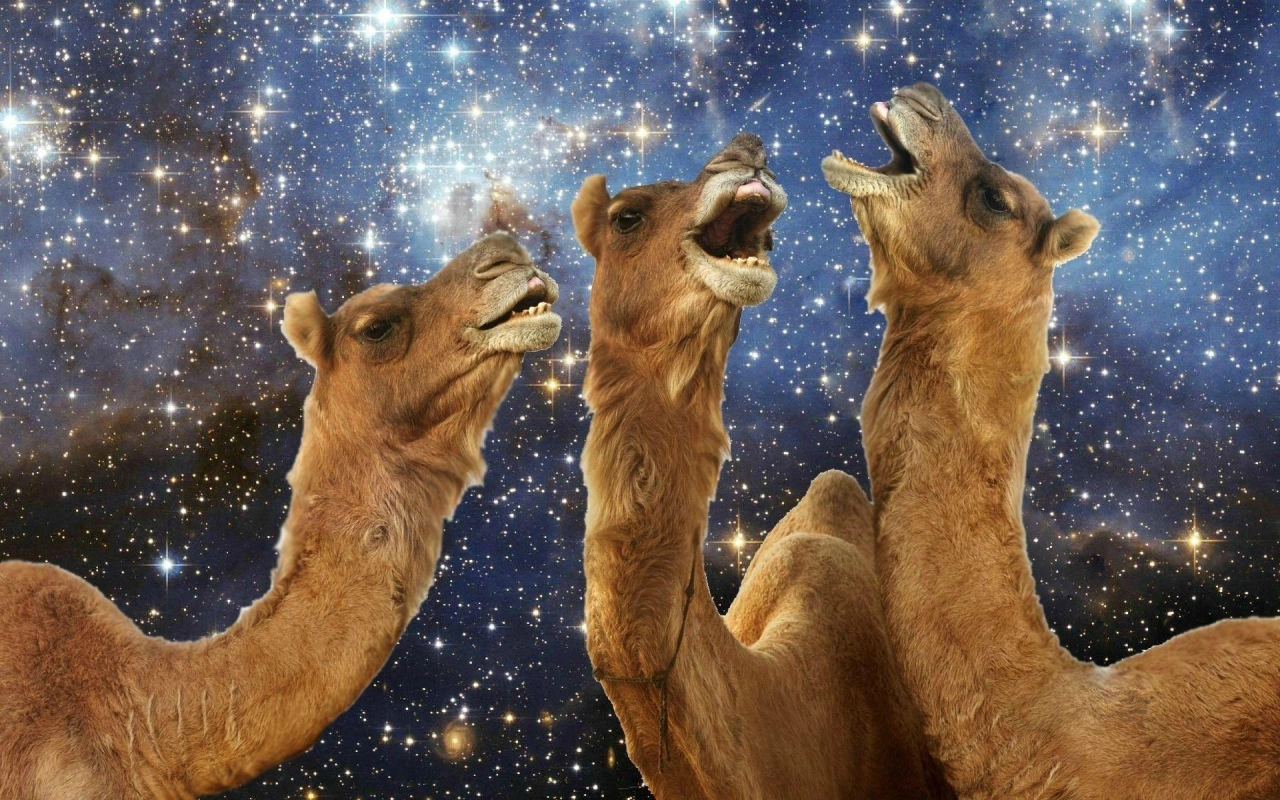Meet the Sugar glider (Petaurus breviceps), an enchanting marsupial that thrives in the trees and possesses the remarkable ability to glide through the air.
Its name reflects its affinity for sugary delights, such as sugar and honey. Although they may resemble flying squirrels, Sugar gliders are not closely related, illustrating an intriguing example of convergent evolution. In Latin, their scientific name, Petaurus breviceps, translates to “short-headed rope-dancer,” underscoring their nimble and graceful movements as they navigate the canopy.
But what’s really cool about them is their pair of gliding membranes, called patagia, that allow them to soar effortlessly from tree to tree. Native to southeastern Australia, they have a sweet tooth for sugary treats like sap and nectar.
Sugar gliders are even popular as pets, though there’s a bit of confusion with similar species. So, let’s dive into the wonderful world of sugar gliders and learn more about these fascinating little gliders!
Information
| Characteristic | Sugar Gliders |
|---|---|
| Scientific Name | Petaurus breviceps |
| Family | Petauridae |
| Type | Marsupial |
| Order | Diprotodontia |
| Temperament | Social and curious |
| Lifespan | 12 to 15 years |
| Size | Body length: 24 to 30 cm (9.4 to 11.8 inches) |
| Weight | 90 to 150 grams (3.2 to 5.3 ounces) |
| Diet | Omnivorous, primarily consisting of tree sap, nectar, fruits, insects, and small vertebrates |
| Distribution | Australia, Indonesia, Papua New Guinea |
| Habitat | Forested areas and woodlands |
| Conservation Status | Least Concern (IUCN) |
| Fun Fact | Sugar gliders can glide up to 50 meters (164 feet) using their patagium, a membrane stretching from their wrist to their ankle. |
Physical Characteristics of the Sugar Glider
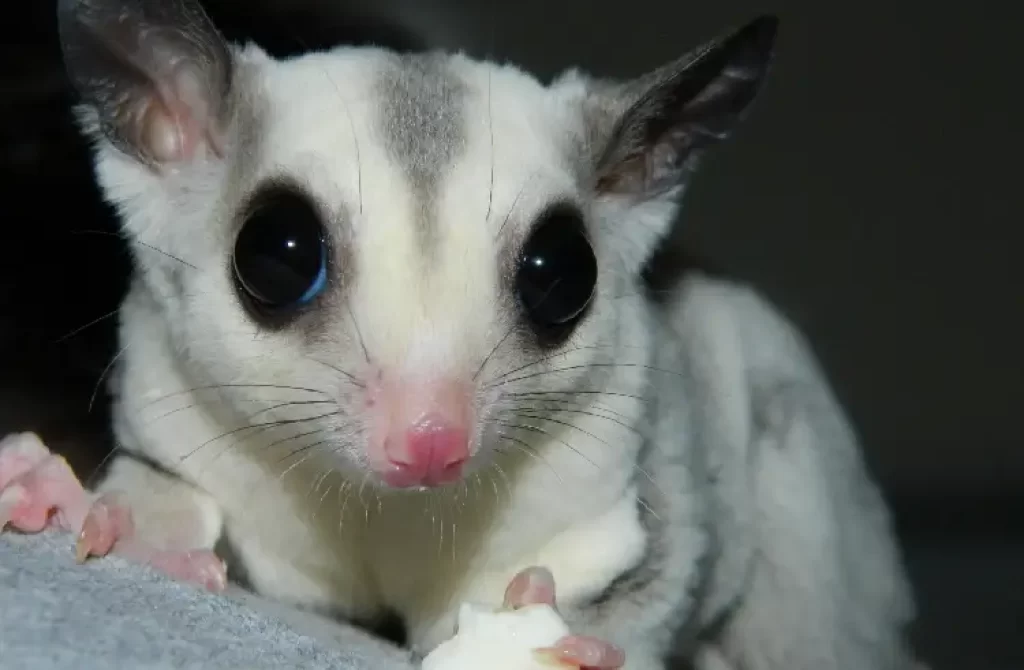
The sugar glider (Petaurus breviceps) is a fascinating marsupial that captivates with its unique physical features. Resembling a squirrel in body structure, this small creature exhibits a range of distinctive characteristics that contribute to its remarkable adaptation.
Here, we will delve into the physical traits of the sugar glider, exploring its size, weight, fur coloration, and other notable features. Join us as we uncover the intriguing details that make the sugar glider a truly captivating species.
Body Size and Structure
The sugar glider boasts a compact body, measuring approximately 24-30 cm (9-12 in) from nose to tail tip. Its physique is similar to that of a squirrel, with a sleek and streamlined profile.
Males tend to be larger than females, and their weight ranges from 115-140 grams (4-5 oz). This sexual dimorphism contributes to the species’ intriguing dynamics and behaviors.
Fur Coat and Coloration
Adorned in a remarkable fur coat, the sugar glider exhibits a captivating blend of colors. The fur is typically thick, soft, and predominantly blue-grey, providing effective insulation and protection against the elements.
However, occasional variations in coloration can be observed, including rare instances of yellow, tan, or albino individuals. These unique color morphs add an element of intrigue and visual diversity to the sugar glider population.
Distinctive Markings
A distinguishing feature of the sugar glider is the presence of a prominent black stripe that extends from its nose to the middle of its back. This dark marking creates a striking contrast against the lighter fur, adding to the animal’s aesthetic appeal.
Additionally, the belly, throat, and chest of the sugar glider exhibit a cream-colored hue, further accentuating its distinct appearance.
Prehensile Tail
One of the notable characteristics of the sugar glider is its long, partially prehensile tail. This specialized tail allows the glider to grasp and manipulate objects, contributing to its arboreal lifestyle. With the tail serving as an additional limb, the sugar glider gains enhanced dexterity and agility when navigating its natural habitat.
Adaptations for Nocturnal Life
As a nocturnal species, the sugar glider possesses several adaptations that facilitate its activities during the nighttime hours. Its large eyes are well-suited for low-light conditions, allowing for improved vision in the dark. Furthermore, the glider’s ears are capable of swiveling, assisting in locating prey and detecting potential threats in its surroundings.
Unique Adaptations of Sugar gliders
Sugar gliders possess several unique adaptations that enable their survival in their natural habitat. Their large eyes aid in nocturnal vision, allowing them to see clearly at night.
They have swiveling ears that help them locate prey in the dark. Each foot has five digits, with an opposable toe on each hind foot, similar to a thumb in humans.
This adaptation allows them to firmly grip branches and navigate their arboreal environment. The second and third digits on their hind feet are partially fused, creating a grooming comb, while the fourth digit on their forefoot is elongated and sharp, aiding in extracting insects from tree bark.
Gliding Abilities
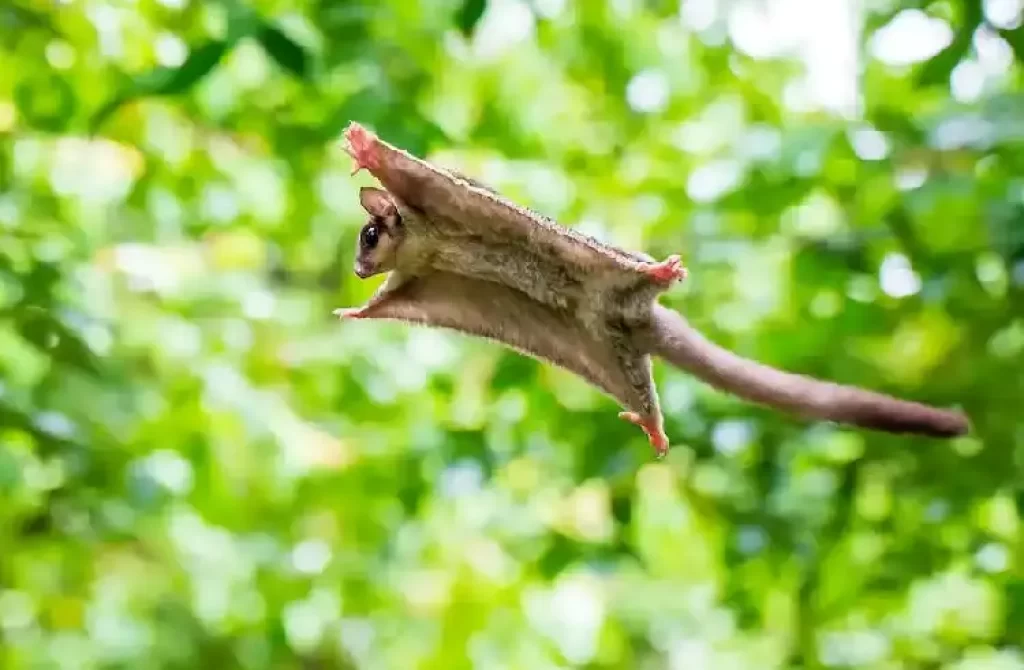
One of the most remarkable features of sugar gliders is their ability to glide through the air, similar to flying squirrels. They have a pair of gliding membranes, called patagia, that extend from their forelegs to their hindlegs. When the legs are stretched out, these membranes allow sugar gliders to glide considerable distances.
Gliding is a vital skill that helps them move efficiently, reach food sources, and evade predators. Their gliding movements are controlled by well-developed muscles and coordinated with trunk, limb, and tail movements.
How do sugar gliders fly?
Sugar gliders are not capable of true flight like birds or bats. However, they have a unique adaptation known as gliding, which allows them to move through the air in a controlled manner. Gliding is the process of moving through the air using a specialized membrane of skin called the patagium.
The patagium is a thin, stretchy membrane that extends between the sugar glider’s wrists and ankles. When a sugar glider wants to glide, it extends its limbs and spreads the patagium, creating a large surface area for catching air currents. By using their strong hind legs to push off from a higher point, such as a tree branch, sugar gliders can launch themselves into the air and initiate a glide.
During gliding, sugar gliders can control their direction and speed by adjusting the position of their limbs and tail. They use their limbs as wings, altering the shape of the patagium to generate lift and control their descent. The tail acts as a stabilizer, helping them maintain balance and maneuver through the air.
Gliding allows sugar gliders to travel between trees, search for food, and escape from predators. They can glide for impressive distances, covering up to 50 meters or more in a single glide. With practice, they can even make mid-air adjustments and change their flight path.
Natural Habitat
Sugar gliders are native to a small region of southeastern Australia, including southern Queensland and most of New South Wales east of the Great Dividing Range. They are well-adapted to diverse environments, ranging from woodlands to rainforests.
These habitats provide them with abundant food sources, such as nectar, sap, fruits, and insects. Their preference for forested areas with tree canopies allows them to glide effortlessly between trees in search of food and shelter.
Now that we’ve explored the fascinating world of sugar gliders, from their physical characteristics and unique adaptations to their natural habitat, there’s still more to discover.
So, let’s delve further into the intriguing lives of these adorable creatures and uncover additional captivating facts about sugar gliders!
Exploring the Natural Habitat of Sugar Gliders
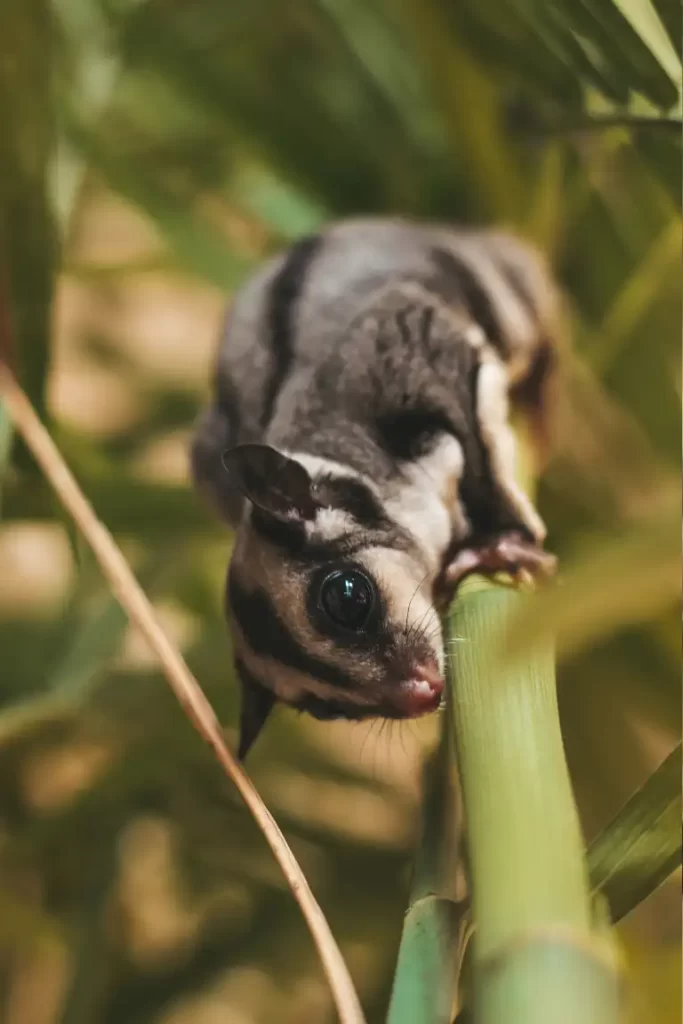
Sugar gliders are native to the forests of Australia, particularly the northern and eastern regions, as well as parts of New Guinea and Indonesia. They are well-adapted to living in tree-dwelling environments and can be found in a variety of habitats, including rainforests, eucalyptus forests, and woodlands. These agile creatures spend the majority of their lives in the canopy, using their gliding ability to move from tree to tree in search of food and shelter.
Geographic Distribution
Sugar gliders are native to Australia, where they are widely distributed across the northern and eastern regions of the country.
They can also be found in parts of New Guinea and Indonesia. Within Australia, sugar gliders inhabit various states, including Queensland, New South Wales, Victoria, and South Australia. Their adaptability has allowed them to thrive in a range of environments, from dense rainforests to open woodlands.
Tree-Dwelling Adaptations
One of the key features that define sugar gliders’ natural habitat is their ability to navigate and reside in the treetops. Their unique adaptations enable them to move seamlessly between trees and find food and shelter within the canopy.
With their gliding membranes and grasping limbs, sugar gliders effortlessly traverse the forested landscape, utilizing the vertical space to their advantage.
Rainforests
Sugar gliders are often found in lush rainforest environments, where abundant foliage and diverse plant species provide them with ample resources. The dense canopy offers protection from predators and serves as a source of food, with nectar-rich flowers and sap-producing trees attracting these gliding possums.
Eucalyptus Forests
Eucalyptus forests are another favored habitat of sugar gliders. These forests are characterized by tall eucalyptus trees, which provide a reliable food source in the form of leaves, blossoms, and sap. Sugar gliders navigate the complex network of branches, using their gliding abilities to access different parts of the forest and find suitable nesting sites.
Woodlands
Woodland habitats, encompassing open areas with scattered trees, also support sugar glider populations. While not as dense as rainforests or eucalyptus forests, woodlands provide the gliders with a diverse range of food sources, including insects, fruits, and nectar.
They can utilize the available trees for shelter and nesting, while utilizing their gliding abilities to explore the surrounding landscape.
The Diet of Sugar Gliders: What Do Sugar Gliders Love to Eat?

The diet of sugar gliders (Petaurus breviceps) is as diverse as their natural habitat. These fascinating marsupials have adapted to extract nourishment from an array of sources, with a particular affinity for sweet treats.
In this section, we will explore the dietary preferences of sugar gliders, shedding light on their love for tree sap, nectar, and pollen, as well as their versatile omnivorous nature.
Tree Sap and Nectar
Sugar gliders have earned their name due to their predilection for sugary foods. One of their dietary staples is tree sap, which they extract by gnawing into tree bark or accessing stored liquid from open bore holes.
Their specialized teeth and long tongues allow them to lap up the delectable sap and nectar. These sweet sources provide essential energy and nutrients for sugar gliders.
Fruits and Flowers
In addition to sap and nectar, sugar gliders enjoy a variety of fruits and flowers. They are opportunistic feeders, taking advantage of the seasonal abundance of these food sources. From native fruits to exotic offerings, sugar gliders feast on a diverse range of plant-based delights.
Their foraging skills and agile movements in the forest canopy enable them to access these tasty treats.
Bugs and Bite-sized Bites: A Carnivorous Craving
Believe it or not, sugar gliders have a wild side too! When the opportunity presents itself, these omnivorous creatures turn into stealthy hunters. They may snack on small critters like lizards and birds, satisfying their carnivorous cravings.
While bugs and bite-sized bites don’t make up the main course, they provide an extra protein punch to keep these gliders on their toes.
Nature’s Seasonal Specials: Adapting to the Flavors of the Season
Just like foodies who follow seasonal menus, sugar gliders adapt their tastes as the seasons change. In summer, when insects are buzzing around, they indulge in a protein-rich feast.
But when winter arrives and bugs become scarce, they turn to alternative sources like acacia gum, eucalyptus sap, and other natural delights. It’s all about savoring the seasonal specials!
Ecological Role
Sugar gliders play an important ecological role as they feed on nectar-rich flowers. In their quest for pollen, they inadvertently aid in pollination, particularly of Banksia species.
Their feeding habits contribute to the biodiversity and ecological balance of their habitat, making them valuable participants in their ecosystem.
Do sugar gliders poop a lot?
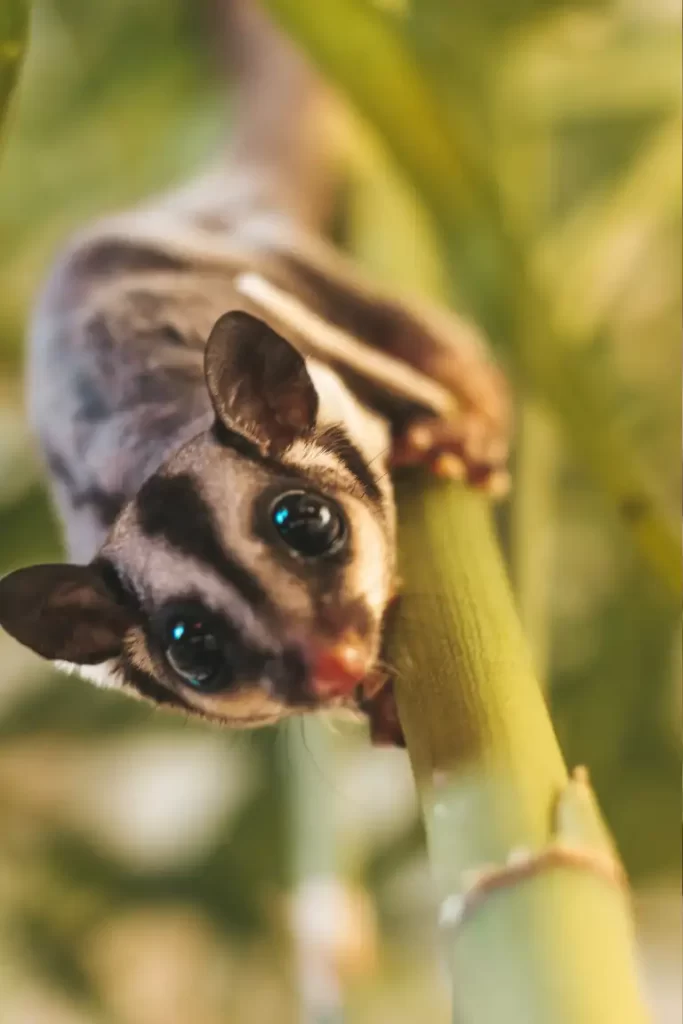
Sugar gliders, like most animals, have regular digestive processes, so they do produce feces as part of their bodily functions. However, the frequency and amount of their feces may vary depending on factors such as diet, metabolism, and overall health.
Sugar gliders have a relatively high metabolic rate, which means they process food quickly, leading to more frequent bowel movements compared to some other animals. Additionally, their diet consists of fruits, nectar, sap, and insects, which are relatively high in moisture content. As a result, their feces may have a softer consistency and appear more frequent compared to animals with a drier or higher fiber diet.
The exact frequency of sugar gliders’ bowel movements can vary, but it is generally not excessive or problematic. Healthy sugar gliders typically have regular and well-formed feces. It’s important to monitor your pet’s feces to ensure there are no significant changes in frequency, consistency, or appearance, as these can be indicators of health issues such as digestive problems or dietary imbalances.
Maintaining a balanced and appropriate diet, providing clean and hygienic living conditions, and regular veterinary check-ups can help ensure that your sugar glider’s digestive system functions optimally and that their bowel movements remain healthy and consistent.
Social Lives of Sugar Gliders: Bonds, Communication, and Cozy Colonies
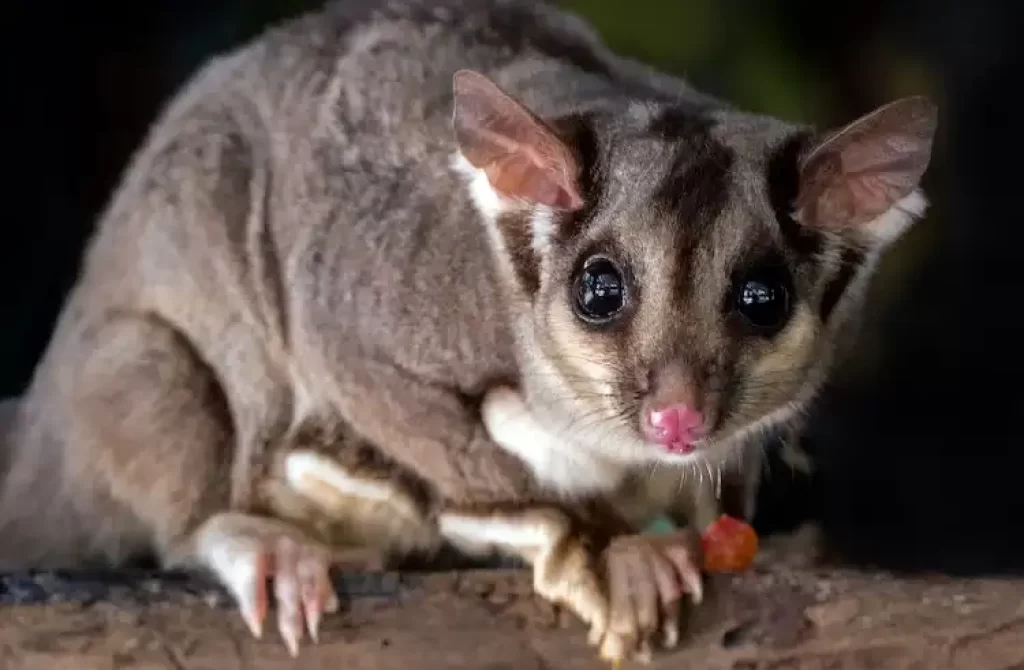
Beyond their charming appearance, sugar gliders (Petaurus breviceps) are highly social creatures that thrive in the company of their fellow gliders.
Colonial Connections: Nests and Drays
Sugar gliders are not solitary wanderers but instead form close-knit communities. These communities, often referred to as nests or drays, are like cozy neighborhoods in the treetops.
Within these colonies, you’ll find approximately 10 to 15 individuals, though larger groups of up to 30 have been observed. Together, they create a bustling social network, supporting and relying on one another.
Strong Bonds and Social Grooming
In the world of sugar gliders, relationships matter. They forge strong bonds with their group members, fostering a sense of camaraderie and togetherness. Social grooming plays a vital role in strengthening these bonds. Through gentle nibbles and meticulous grooming sessions, sugar gliders express care and affection, solidifying their social connections.
Communicating through Chirps and Clicks
Sugar gliders have their own language of communication, utilizing a range of vocalizations to convey their intentions and emotions. From soft chirps and clicks to louder calls, they have a repertoire of sounds that serve as social signals.
These vocalizations are used for various purposes, such as marking territory, expressing distress, or simply staying connected within the group.
Scent Marking: Leaving Their Fragrant Trace
In the realm of sugar glider social interaction, scent plays a crucial role. They possess scent glands located on their foreheads, chests, and paracloacal areas, which they use for marking territory and communicating with their group members.
Through these distinctive scents, sugar gliders leave behind their fragrant trace, creating a sensory map of their social landscape.
Communal Nesting: A Warm Embrace
When it’s time to rest and seek refuge from the world, sugar gliders huddle together in communal nests. These cozy and well-constructed nests provide a sense of security and warmth.
Sharing a nest not only promotes a sense of belonging but also helps regulate body temperature during cooler nights. It’s a true testament to their social nature and the comfort they find in each other’s presence.
Sugar Glider Reproduction: Pouches, Joeys, and Seasonal Breeding
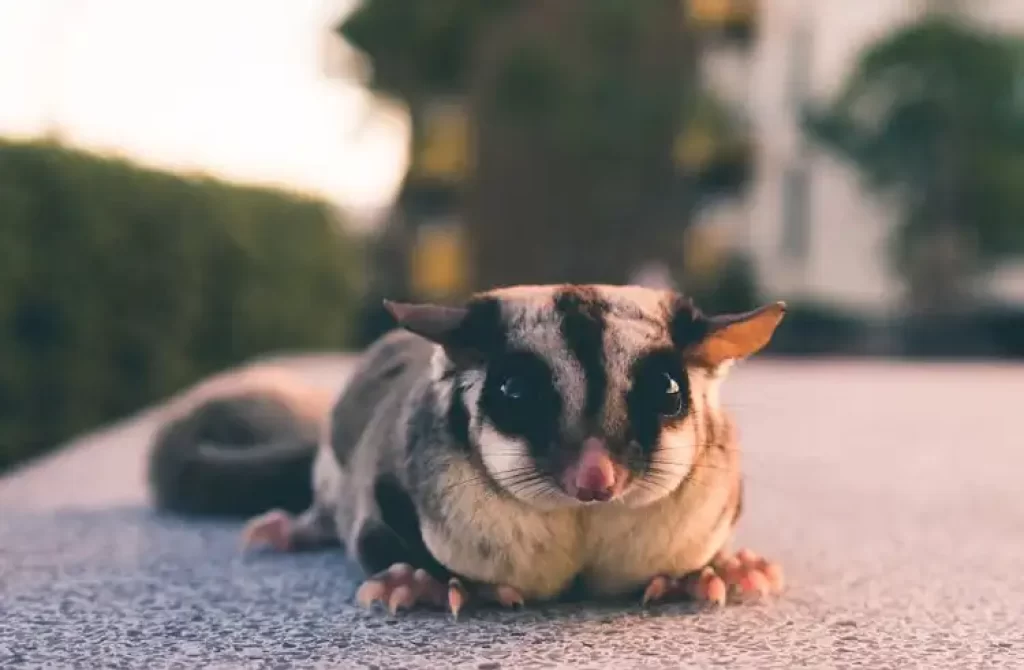
Reproduction is a fascinating chapter in the lives of sugar gliders (Petaurus breviceps), showcasing their extraordinary adaptations and captivating behaviors. Having explored the captivating world of sugar gliders, it’s now time to embark on a journey into the intricate process of their reproduction.
From the distinct anatomical features of females and males to the enchanting development of joeys within the pouch, let’s delve deeper into the wonders of sugar glider reproduction and uncover the secrets of their life cycle.
Female Anatomy and the Marsupial Pouch
Female sugar gliders possess two ovaries and two uteri, typical of marsupials. Their reproductive system includes a special feature known as the marsupium, a pouch located in the middle of the abdomen. The pouch opens anteriorly, and when young are present, two lateral pockets extend posteriorly.
Usually, the pouch contains four nipples, although instances of individuals with two nipples have been recorded. This unique pouch serves as a nurturing space for their developing offspring.
Male Anatomy and Bifurcated Reproductive Structures
Male sugar gliders have their own fascinating reproductive adaptations. They possess a bifurcated penis that corresponds to the two uteri of females. This anatomical feature facilitates successful reproduction and ensures compatibility with the female reproductive system.
Sexual Maturity and Breeding Patterns
The age of sexual maturity in sugar gliders varies between males and females. Males typically reach maturity between 4 to 12 months of age, while females require 8 to 12 months.
In the wild, sugar gliders breed once or twice a year, influenced by climate and habitat conditions. In captivity, where living conditions are consistent and nutrition is adequate, they may breed multiple times a year.
The Remarkable Journey of Joeys
After a gestation period of 15 to 17 days, a sugar glider female gives birth to one (19%) or two (81%) babies, known as joeys, per litter. These tiny joeys, weighing a mere 0.2 grams (0.0071 oz), are born undeveloped and furless, with only their sense of smell fully developed.
To guide them into the external marsupium, the mother possesses a scent gland that attracts the sightless joeys from the uterus. Joeys have a continuous arch of cartilage in their shoulder girdle, which supports their forelimbs and assists them in climbing into the pouch.
Pouch Life and Development
Once inside the pouch, joeys continue their development under the care of their mother. They remain completely contained within the pouch for approximately 60 days after birth, where they receive nourishment from the mammae.
Around 80 days after birth, their eyes begin to open, and at approximately 110 days, they leave the nest. By the time they are weaned, joeys have developed their thermoregulatory system, allowing them to regulate their own body temperature with their larger body size and thicker fur.
Seasonal Breeding and Gliding Abilities
In southeast Australia, sugar glider breeding is seasonal, with young being born only during winter and spring (June to November).
Unlike ground-dwelling animals, sugar gliders and other gliding species produce fewer but heavier offspring per litter. This adaptation enables female sugar gliders to retain their gliding ability even while pregnant, ensuring their survival in their arboreal habitat.
Sugar Gliders as Pets: A Delightful but Demanding Choice
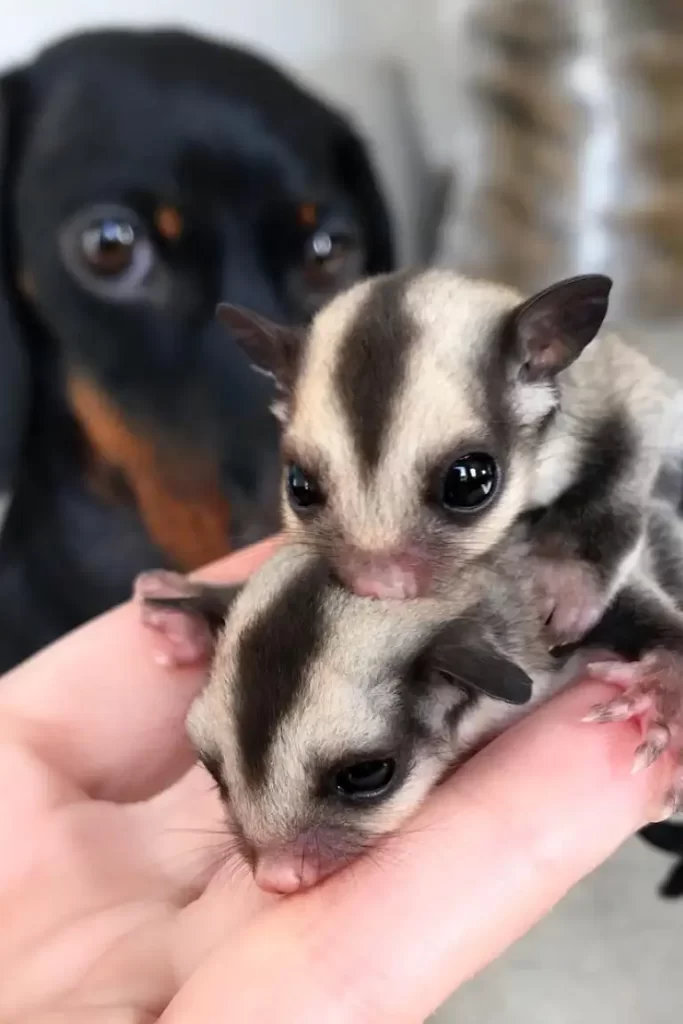
Sugar gliders have emerged as popular exotic pets in recent years, captivating enthusiasts with their adorable appearance and intriguing behaviors. However, prospective owners must be aware of the specific requirements involved in caring for these charming marsupials.
A Delightful Choice with Unique Needs
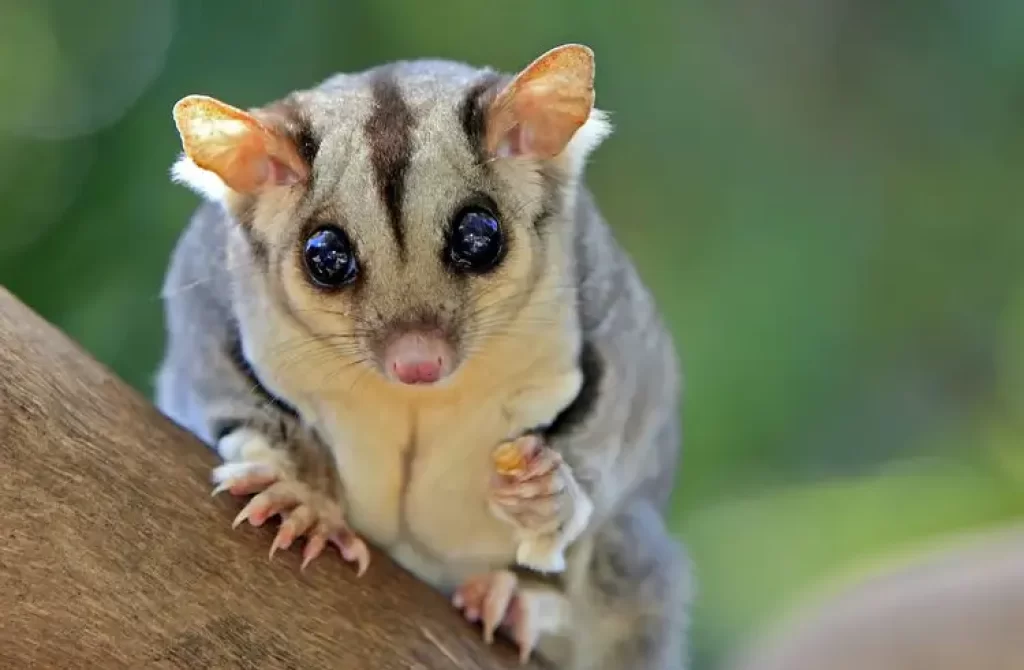
The Charm of Sugar Gliders
Sugar gliders possess an enchanting allure, with their small size, large eyes, and ability to glide through the air. Their inquisitive and social nature makes them delightful companions for those willing to meet their specific needs.
Nutritional Requirements
Proper nutrition is vital for the health and well-being of sugar gliders. This section will explore their dietary needs, including a balanced mix of fruits, vegetables, proteins, and specialized glider food. We’ll discuss the importance of providing a varied diet and the potential challenges involved in meeting their nutritional requirements.
Nocturnal Life: Adjusting to Their Schedule
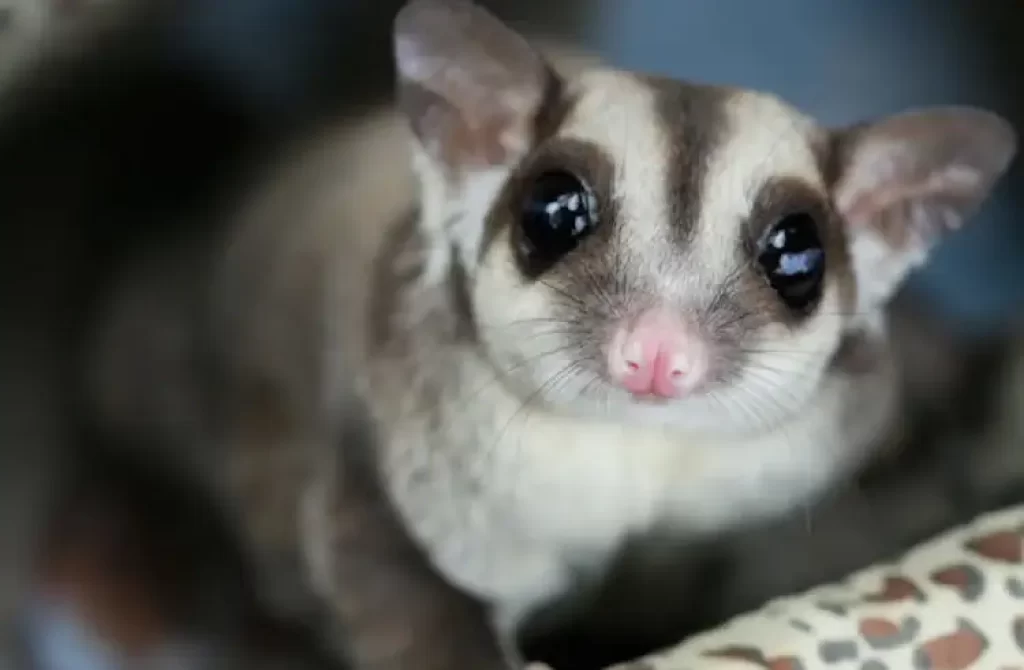
Understanding Nocturnal Behavior
Sugar gliders are nocturnal animals, meaning they are most active during the night. This section will delve into their natural behavior patterns, sleep-wake cycles, and the adjustments required to accommodate their unique schedule.
Creating an Optimal Environment
Creating a suitable living environment is crucial for the well-being of sugar gliders. We’ll explore the importance of providing ample space for gliding, climbing structures, and appropriate nesting materials. We’ll also discuss the significance of temperature and lighting considerations to mimic their natural habitat.
Social Creatures: The Importance of Companionship
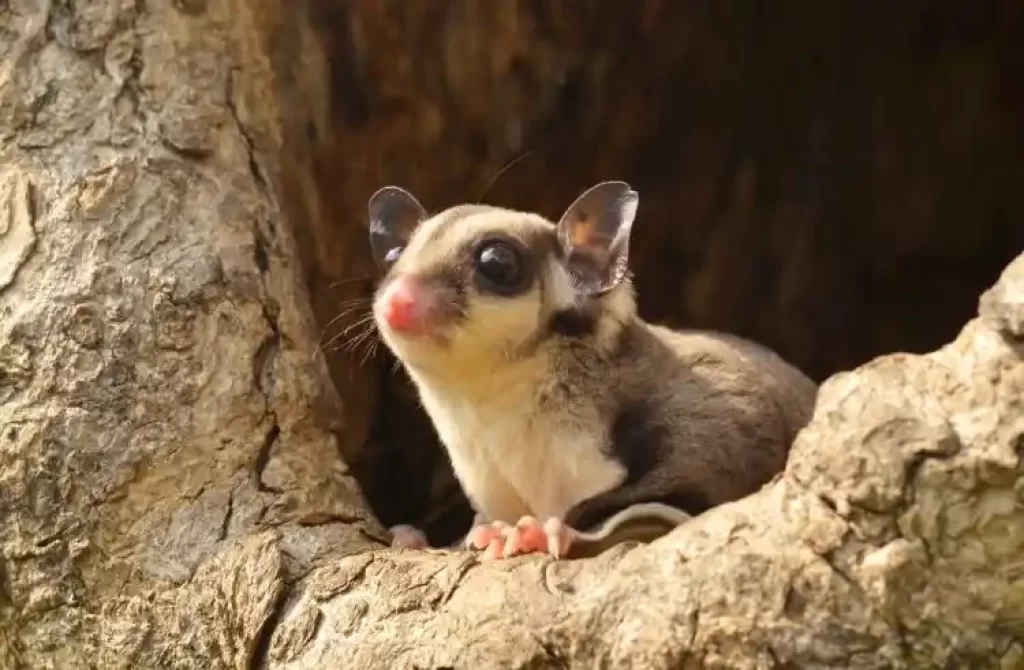
The Social Nature of Sugar Gliders
Sugar gliders are highly social animals that thrive in the company of their own kind. This section will highlight the significance of companionship for their mental and emotional well-being. We’ll discuss the options for housing multiple gliders and the responsibilities of ensuring appropriate socialization opportunities.
Bonding with Your Sugar Glider
Building a bond with a sugar glider requires time, patience, and understanding. We’ll provide insights on building trust, handling techniques, and creating a nurturing and interactive relationship with your pet.
Legalities and Ethical Concerns
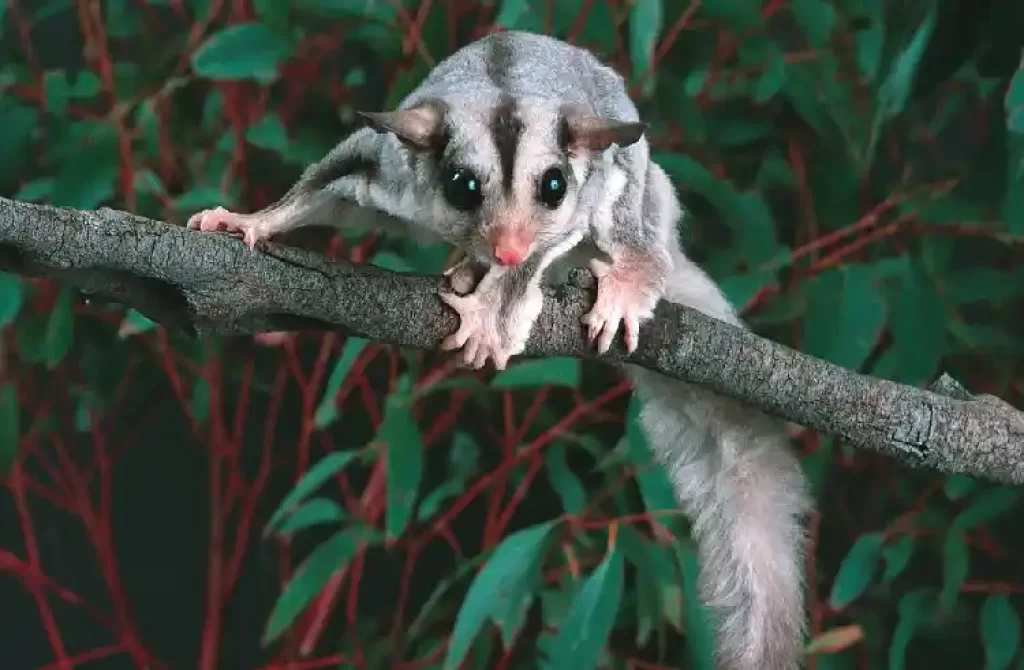
Regulations and Ownership Restrictions
Owning a sugar glider as a pet is subject to legal regulations in different countries and regions. We’ll explore the legalities and ownership restrictions associated with sugar gliders, highlighting the need for responsible ownership and adherence to local laws.
Ethical Considerations and Responsible Pet Ownership
While sugar gliders may be popular as pets, ethical concerns exist regarding their captive care. This section will address the importance of responsible pet ownership, including providing proper care, veterinary attention, and considering the long-term commitment required to ensure the well-being of these captivating creatures.
Related: Thinking of adopting a sugar glider as a pet? check this article before making your decision – Owning a Sugar Glider: Are You Ready for the Commitment?
Conservation of Sugar Gliders: Protecting a Fragile Species
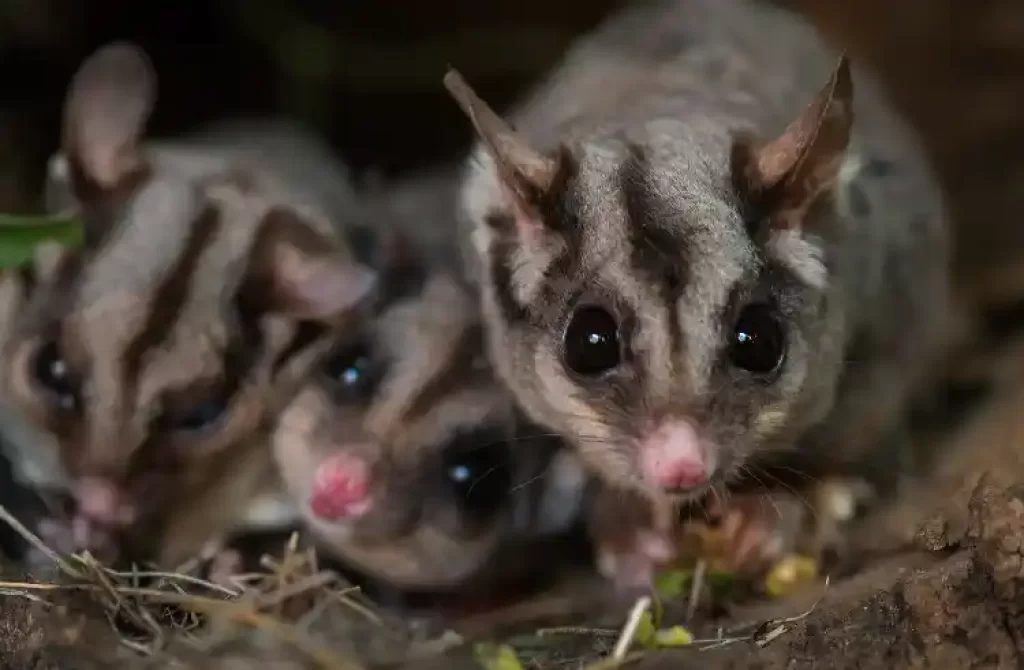
The Importance of Conservation
Sugar gliders (Petaurus breviceps) are small, arboreal marsupials native to Australia. These charismatic creatures play a crucial role in maintaining the balance of ecosystems.
They contribute to seed dispersal, pollination, and insect control, making them essential for the overall health and functioning of their natural environment. Preserving sugar glider populations is not only crucial for their own survival but also for the well-being of other plant and animal species they interact with.
Conservation Laws and Frameworks
Conservation in Australia is enacted through a comprehensive legal framework at the federal, state, and local levels.
The central piece of legislation for protecting native species, including sugar gliders, is the Environment Protection and Biodiversity Conservation Act 1999 (EPBC Act).
This act provides a range of protections for threatened species and their habitats. It regulates activities that may impact sugar gliders, such as land clearing, logging, and development projects.
In addition to the EPBC Act, individual states and territories have their own conservation laws to protect sugar gliders. For example, the National Parks and Wildlife Act 1974 is an example of conservation law in the state of South Australia.
It outlines regulations specific to the protection of sugar gliders in that region. These laws aim to ensure the long-term survival of sugar gliders by safeguarding their habitats and minimizing human-induced threats.
Protecting Sugar Gliders: Permits and Regulations
To ensure the well-being of sugar gliders and prevent illegal activities, permits and regulations are in place regarding their capture, possession, sale, and ownership. In Australia, it is illegal to capture or sell wild sugar gliders without a permit.
This measure helps protect wild populations from overexploitation and ensures that individuals are obtained from legal and sustainable sources.
If you wish to keep a sugar glider as a pet in Australia, you must adhere to specific regulations. The exact requirements may vary depending on the state or territory.
For example, in South Australia, it is legal to keep one sugar glider without a permit, as long as it was acquired legally from a source with a permit. However, obtaining or possessing more than one glider, or engaging in activities such as selling or giving away gliders, requires a permit.
Habitat Management and Restoration
Preserving and managing suitable habitats is essential for the conservation of sugar gliders. The loss of natural habitat in Australia over the past two centuries has had a significant impact on various species, including sugar gliders.
Habitat loss occurs primarily due to land clearing for agriculture, urbanization, and other human activities. Fragmentation of habitats also poses a threat as it isolates populations and reduces gene flow.
Efforts to protect sugar gliders’ habitats focus on several key strategies. Retaining hollow-bearing trees is crucial as sugar gliders rely on these tree hollows for nesting and shelter.
Promoting selective logging practices that preserve habitat structure can allow sugar gliders to persist in areas that have undergone mild to moderate logging. Creating corridors to connect fragmented habitats is another approach to facilitate safe movement for sugar gliders between patches of suitable environment.
Habitat restoration projects are also vital in reclaiming and rehabilitating degraded areas. These initiatives involve planting native vegetation, restoring habitat structure, and removing invasive species. Community involvement in habitat restoration plays a crucial role in raising awareness, fostering a sense of stewardship, and ensuring the long-term success of these projects.
Research and Monitoring Programs
Research and monitoring play a crucial role in understanding the population dynamics and conservation needs of sugar gliders. Ongoing research programs and monitoring initiatives aim to assess population trends, identify threats, and inform conservation strategies. Scientists study sugar gliders
Does the Sugar glider make vocalizations such as barks, chatters, and hisses?
Yes, the Sugar glider (Petaurus breviceps) is known to make a variety of vocalizations, including barks, chatters, and hisses. These vocalizations serve different purposes and are part of their communication repertoire. Here are some details about the vocalizations of Sugar gliders:
- Barks: Sugar gliders produce sharp, short barking sounds. Barking is commonly used as a warning signal to alert other members of their group about potential threats or disturbances in their environment. It can also be a sign of territoriality.
- Chatters: Chattering vocalizations are rapid, high-pitched sounds that Sugar gliders make when they are excited, agitated, or alarmed. Chattering can be heard during moments of heightened arousal or when they are engaging in social interactions.
- Hisses: Sugar gliders can emit hissing sounds, which are typically associated with aggression or fear. Hissing is a defensive vocalization used to intimidate potential predators or to establish boundaries during conflicts with other gliders.
Related animals
Frequently asked questions
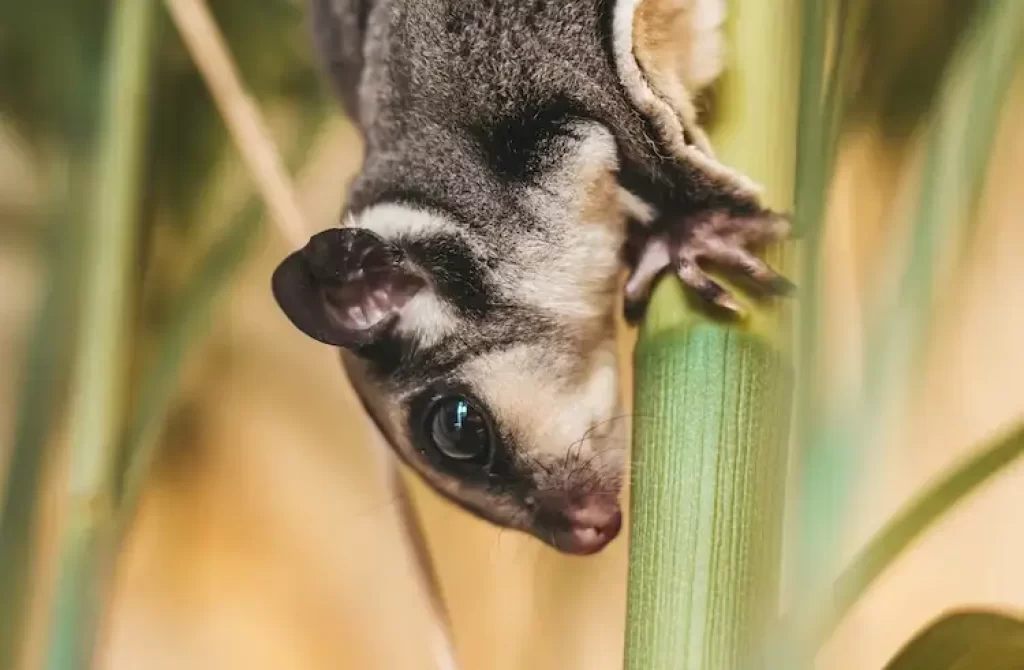
Are baby Sugar gliders called joeys?
Yes, baby sugar gliders are called joeys. The term “joey” is commonly used to refer to the young of marsupials, including sugar gliders. When a female sugar glider gives birth, the tiny undeveloped offspring, known as joeys, are born.
They are born furless, blind, and largely undeveloped. After birth, the joeys crawl into the mother’s pouch, where they continue to develop and grow.
The pouch provides a protected environment for the joeys to receive nourishment and complete their development. Inside the pouch, the joeys attach to one of the mother’s teats and continue to grow, gaining fur and gradually developing their senses and motor skills.
They spend a significant amount of time inside the pouch, receiving nourishment and growing until they are ready to venture out and explore the world outside.
The term “joey” is also used to refer to the young of other marsupials, such as kangaroos, wallabies, and koalas, highlighting the unique reproductive strategy of marsupials, where the young are born at an extremely early stage of development and complete their development externally, typically within the mother’s pouch.
Do sugar gliders have soft fur?
Yes, sugar gliders have soft fur. Their fur is known for being plush and velvety to the touch. The fur of sugar gliders is dense and silky, providing them with warmth and insulation. It is often described as soft and smooth, making them quite pleasant to touch and hold.
The fur of sugar gliders can vary in coloration, ranging from shades of gray to brown, with some individuals having lighter or darker variations. Their fur is designed to help them blend into their natural habitat and provide camouflage while they move through the trees.
Sugar gliders take great care of their fur and spend time grooming themselves and each other to keep it clean and well-maintained. Grooming involves using their hands and teeth to remove debris, dirt, and parasites from their fur. This grooming behavior helps to keep their fur soft, clean, and in good condition.
Can a Sugar glider take off by itself?
No, sugar gliders cannot take off and fly like birds. They rely on launching themselves from an elevated point, such as a tree branch or a high surface, to initiate a glide. Their ability to glide is made possible by their specialized anatomy, specifically the presence of a patagium, which is a membrane of skin that stretches between their limbs.
To start a glide, a sugar glider will use its powerful hind legs to push off from a higher point. By extending its limbs and spreading the patagium, it creates a large surface area that catches the air currents and allows it to glide. The gliding motion is more like controlled falling or soaring through the air, rather than true flight.
Once in the air, sugar gliders can adjust the position of their limbs and tail to control their direction and speed during the glide. They can make mid-air adjustments and change their flight path to some extent. However, they are unable to take off from a stationary position without an elevated launching point.
Up Next:
References:
- “Sugar Glider.” Wikipedia. Retrieved from https://en.wikipedia.org/wiki/Sugar_glider.
- “Petaurus breviceps.” The IUCN Red List of Threatened Species. Retrieved from http://www.iucnredlist.org/details/16731/0.



